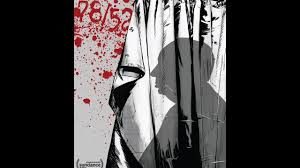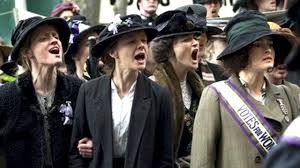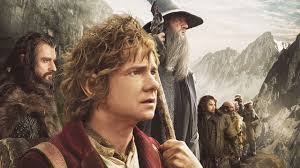NO VACANCY: Movie reviews of 78/52 and The Florida Project by Howard Casner
Posted: November 10, 2017 | Author: Donald | Filed under: Uncategorized | Tags: 78/52, Alexander O. Philippe, Alfred Hitchcock, Bria Vinaite, Brooklyn Prince, Chris Bergoch, Danny Elfman, Elijah Wood, Guillermo del Toro, Jamie Lee Curtis, Marli Renfro, Martin Scorsese, Peter Bogdanovich, Psycho, Sean Baker, The Florida Project, Willem Dafoe | 10,950 Comments » For questions: hcasner@aol.com
For questions: hcasner@aol.com
First, a word iefrom our sponsors: I am now offering a new service: so much emphasis has been given lately to the importance of the opening of your screenplay, I now offer coverage for the first twenty pages at the cost of $20.00. For those who don’t want to have full coverage on their screenplay at this time, but want to know how well their script is working with the opening pages, this is perfect for you. I’ll help you not lose the reader on page one.
Ever wonder what a reader for a contest or agency thinks when he reads your screenplay? Check out my new e-book published on Amazon: Rantings and Ravings of a Screenplay Reader, including my series of essays, What I Learned Reading for Contests This Year, and my film reviews of 2013. Only $2.99. http://ow.ly/xN31r
and check out my Script Consultation Services: http://ow.ly/HPxKE
Warning: SPOILERS
 Writer/director Alexander O. Philippe’s 78/52 is not only everything you wanted to know about the infamous scene in Alfred Hitchcock’s seminal film Psycho that did for showers what Jaws would later do for Fourth of July swimming in the seas, but everything you didn’t know you wanted to know (the name derives from the set piece requiring 78 camera set ups and 52 shots).
Writer/director Alexander O. Philippe’s 78/52 is not only everything you wanted to know about the infamous scene in Alfred Hitchcock’s seminal film Psycho that did for showers what Jaws would later do for Fourth of July swimming in the seas, but everything you didn’t know you wanted to know (the name derives from the set piece requiring 78 camera set ups and 52 shots).
There has always been something perverse, not just about all of Hitchcock’s oeuvre, but especially in Psycho.
It’s not just that the movie is horrifying and scares the shit out of you.
It’s not just that it’s somewhat mean spirited (not just to the audience, but to the characters on screen).
It’s just that you can tell Hitchcock is having fun killing someone in such a way that both terrifies the audience while making them enjoy it and then feel guilty about it.
THE FEMALE OF THE SPECIES… Movie Reviews of Suffragette, Crimson Peak and The Assassin by Howard Casner
Posted: November 9, 2015 | Author: Donald | Filed under: Uncategorized | Tags: Abi Morgan, Ben Wishaw, Brendan Gleeson, Carey Mulligan, Charlie Hunnam, Crimson Peak, Guillermo del Toro, Helena Bonham-Carter, Hsaio-Hsien Hou, Jessica Chastain, Matthew Robbins, Meryl Streep, Mia Wasikowska, Sarah Gavron, Suffragette, The Assassin, Thomas Hiddleston | 5,134 Comments »First, a word from our sponsors: I am now offering a new service: so much emphasis has been given lately to the importance of the opening of your screenplay, I now offer coverage for the first twenty pages at the cost of $20.00. For those who don’t want to have full coverage on their screenplay at this time, but want to know how well their script is working with the opening pages, this is perfect for you. I’ll help you not lose the reader on page one.
Ever wonder what a reader for a contest or agency thinks when he reads your screenplay? Check out my new e-book published on Amazon: Rantings and Ravings of a Screenplay Reader, including my series of essays, What I Learned Reading for Contests This Year, and my film reviews of 2013. Only $2.99. http://ow.ly/xN31r
and check out my Script Consultation Services: http://ow.ly/HPxKE
Warning: SPOILERS
 In the new historical semi-epic Suffragette, women fight for the right to vote. Not a particularly controversial topic these days, except perhaps in some remote regions of the radical right.
In the new historical semi-epic Suffragette, women fight for the right to vote. Not a particularly controversial topic these days, except perhaps in some remote regions of the radical right.
Written by Abi Morgan (The Iron Lady, Shame and the TV series The Hour) and directed by Sarah Gavron (Brick Lane), there’s nothing that wrong with the movie and it does its job admirably enough, and all the while backed by impeccable period settings and costumes ranging from working to the more leisurely classes.
At the same time, there’s nothing that exciting about it either. It’s a movie that does what it does, but that’s about all that it does.
The strongest parts of the film are in the first third which dramatizes in often devastating detail the life of Maud Watts who works in a laundry. Here the women are paid less than the men (and do more work and have longer hours); endure horrifying working conditions; and are the victims of their bosses sexual predilections.
Maud is your everywoman here, great at her job, a loving mother and wife, reluctant to rock the boat, but equipped with a righteous conscious. In other words, everything the central character of a movie should be so as not to alienate the audience.
That’s perhaps a bit unfair because Carey Mulligan, who plays Maud, gives a very empathetic performance and makes her more than a construct.
But the film begins to lose its way in the second third as the suffragette movement starts taking center stage. It’s hard to say exactly why the movie starts flailing a bit here, except that the screenplay, perhaps, can’t seem to make the idea of women’s right to vote as compelling and interesting as their work and sexual exploitation. Read the rest of this entry »
FANTASY ISLANDS: Movie Reviews of The Hobbit: The Battle of the Five Armies and Into the Woods
Posted: December 30, 2014 | Author: Donald | Filed under: Uncategorized | Tags: Anna Kendricks, Cate Blanchett, Christopher Lee, Dion Beebe, Emily Blunt, Fran Walsh, Guillermo del Toro, Hugo Weaving, Ian McKellen, Into the Woods, James Horton, James Lapine, Johnny Depp, Martin Freeman, Meryl Streep, Orlando Bloom, Peter Jackson, Philippa Boyens, Rob Marshall, Stephen Soundheim, The Battle of the Five Armies, The Hobbit, Wyatt Smith | 6 Comments »First, a word from our sponsors. Ever wonder what a reader for a contest or agency thinks when he reads your screenplay? Check out my new e-book published on Amazon: Rantings and Ravings of a Screenplay Reader, including my series of essays, What I Learned Reading for Contests This Year, and my film reviews of 2013. Only $2.99. http://ow.ly/xN31r
Warning: SPOILERS
 The latest entry of The Hobbit franchise is called The Battle of the Five Armies, and I guess I have to first say that I found the title a tad puzzling because I only counted four…armies, that is. There were elves, dwarves, man and orcs.
The latest entry of The Hobbit franchise is called The Battle of the Five Armies, and I guess I have to first say that I found the title a tad puzzling because I only counted four…armies, that is. There were elves, dwarves, man and orcs.
I guess the fifth comes about if you divide those orcky things into two different factions, but, I don’t know, that sorta felt like cheating to me.
At any rate, I think the story of J.R.R. Tolkien’s prequel to The Lord of the Rings could be used as a metaphor for filmmaker Peter Jackson and his production of this final installment of the adventures of a little person called Bilbo Baggins. Read the rest of this entry »
Movie Review of PACIFIC RIM by Howard Casner
Posted: July 18, 2013 | Author: Donald | Filed under: Uncategorized | Tags: Burn Gorman, Charlie Day, Charlie Hunnam, Diego Klattenhoff, Guillermo del Toro, Indris Elba, Max Martini, Pacific Rim, Rinko Kikuchi, Robert Kazinsky, Travis Beacham | 8 Comments »When Orson Welles went to Hollywood in 1940 and arrived at the studio, he called it “the biggest train set any boy ever had”. Out of that, we got Citizen Kane. Today, we get movies like Pacific Rim. It’s a movie that reminds me of that joke in which you get a child an expensive toy and all he wants to do is play with the cardboard box it came in. Because that is all Pacific Rim is. It’s a blockbuster of a toy engulfed by cardboard characters with cardboard emotions with a cardboard set up and a cardboard plot as flimsy as that metaphor suggests.
The basic idea is perfectly fine. A rift between dimensions down deep in the Pacific Ocean is allowing gigantic creatures to come through and attack mankind; as is fairly obvious, this is not by accident, but at the behest of some ugly creatures who have worn out their own place of existence and need to colonize. To combat these creatures, gigantic robots have been built that are piloted by pairs of people who have close, though not quite psychic, relationships to each other. Yes, that’s right. This is basically Godzilla v. Transformers…not that there’s anything wrong with that, of course.
Six years later, the bad guys are winning and the good guys are just now deciding that it might actually be a good idea not to just fight the creatures in a rock ‘em, sock ‘em manner, but to more fully investigate and actually do something about the trans-dimensional fissure itself. And by now all the governments in the world have dropped all conflict and come together to combat a common foe, in true Susan Sontag, 1950’s sci-fi style. But since Asia is now perhaps the major importer of American films, the final pair in the final robot in the final fight are a hero from the USA and a refugee from Japan (though in keeping with proud U.S. tradition, the American hero is played by a British actor).
The cast is filled with a bunch of B-listers and refugees from various TV series: Charlie Hunnam; Indris Elba; Diego Klattenhoff (who wins the award for best name); Max Martini (oops, sorry, no, Max wins the award for best name); Robert Kazinsky; with Charlie Day and Burn Gorman in the roles of C3PO and R2D2, though without those tin cans’ more appealing personalities. And c’mon, if truth be told, though many of these actors have shown talent, this is still the sort of cast you end up with when, for whatever reason, you can’t get the ones you really would have liked to have had. Only Oscar nominee Rinko Kikuchi (who in true formulaic tradition, becomes Hunnam’s partner) perhaps escapes this description, though you wouldn’t know it by the performance she gives.
What’s so surprising, as well as frustrating, is that for a story that has at its center the need for deep, almost psychic bonds between people, no couple—not one—shows one whiff of charisma. This is probably because every performer is pushed over the top in their acting with performances that are robbed of the remotest sign of subtlety. When the special secret guest star, the inevitable Ron Perlman, is eaten by one of the monsters, I turned to my friend and said, “well, we know they don’t keep kosher since they just ate a bunch of ham”.
The screenplay is by Travis Beacham, with dialog at the level of his previous foray (“Release the Kraken!”), and by Guillermo del Toro, who also directed, in the manner of a police officer reduced to traffic cop (I don’t think we’re in Pan’s Labyrinth anymore, Toto).
One of my most painful movie going experiences in recent memory.











